Abstract
There is growing interest in feed crops in Japanese agriculture, with oats in particular attracting attention. According to data from 2022, the total area of oat cultivation in the prefecture is the largest in the country in terms of rice paddies and fields. A total of 44kha was recorded, with 4.2kha recorded for rice paddies and 39.8kha for farmland. This trend indicates the increasing importance of feed crops in Japanese agriculture. Demand for oats is increasing not only as a grain but also as feed, and the area under cultivation is expanding accordingly. This trend is expected to continue in the future, contributing to improved agricultural productivity and the development of the livestock industry.
Oats total (main data).
In Japanese agriculture, the cultivated area of oats, a feed crop, has fluctuated between 2017 and 2022. At its peak, the nationwide area reached 45.1kha in 2021, but has since declined slightly and has now settled at a level of 97.6%. This characteristic suggests that the cultivated area of oats fluctuates according to certain demand and production conditions. Additionally, the slight decrease from the peak may be due to other factors and changes in demand. These data suggest that oat cultivation is sensitive to fluctuations in demand and markets, and farmers are flexible in their responses.
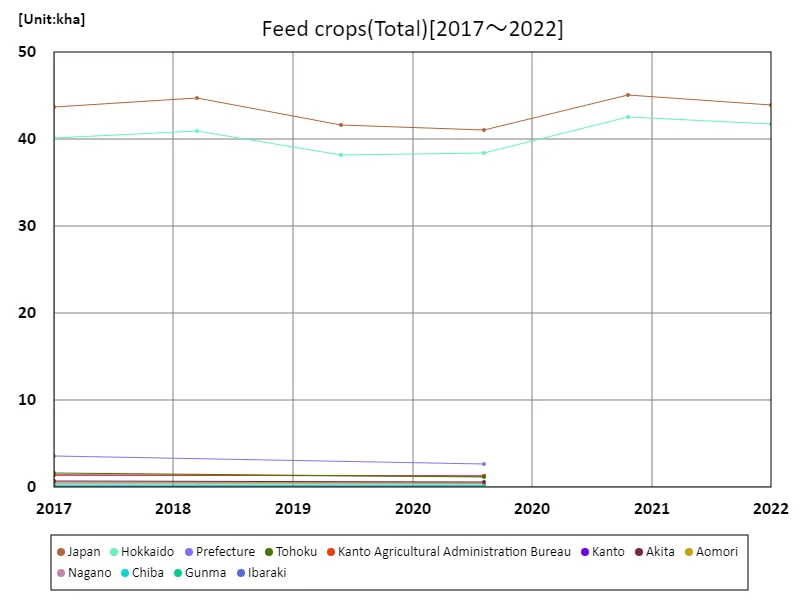

The maximum is 45.1kha[2021] of Japan, and the current value is about 97.6%
Total oats (by prefecture).
In Japanese agriculture, the area of land used for cultivating feed crops varies by prefecture. According to 2022 data, Hokkaido had the largest area overall, recording an area of 41.8kha. This is the current maximum value and suggests that Hokkaido is a major region for the cultivation of feed crops. This characteristic reflects the fact that Hokkaido has vast farmland and an environment and conditions suitable for producing feed crops. Feed crops are also grown in other regions, but on a smaller scale than in Hokkaido. These trends make it clear that Hokkaido is a major producer of feed crops and plays an important role in agriculture.
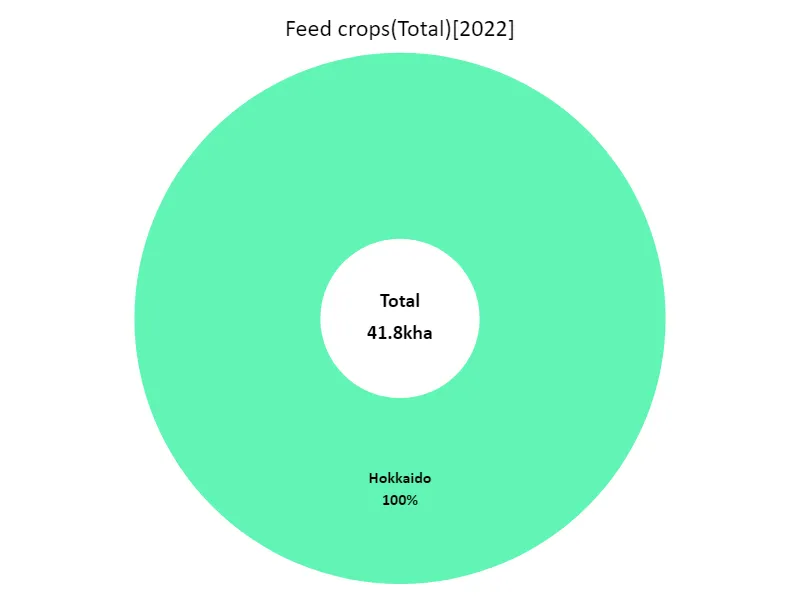

The maximum is 41.8kha of Hokkaido, the average is 41.8kha, and the total is 41.8kha
Oat fields.
In Japanese agriculture, the area of rice fields cultivated with oats, a feed crop, fluctuates between 2017 and 2022. The peak figure was 8.8kha nationwide in 2017, but it has since declined and is now at about half the peak level. This characteristic indicates that the cultivated area of oat fields is on the decline. This decrease is thought to be due to factors such as conversion to other agricultural products, changes in agricultural land use, and changes in demand. It may also be that improvements in agricultural technology and management have made it possible to grow crops more efficiently. These trends indicate that the cultivated area of oat fields is fluctuating but is on a downward trend.
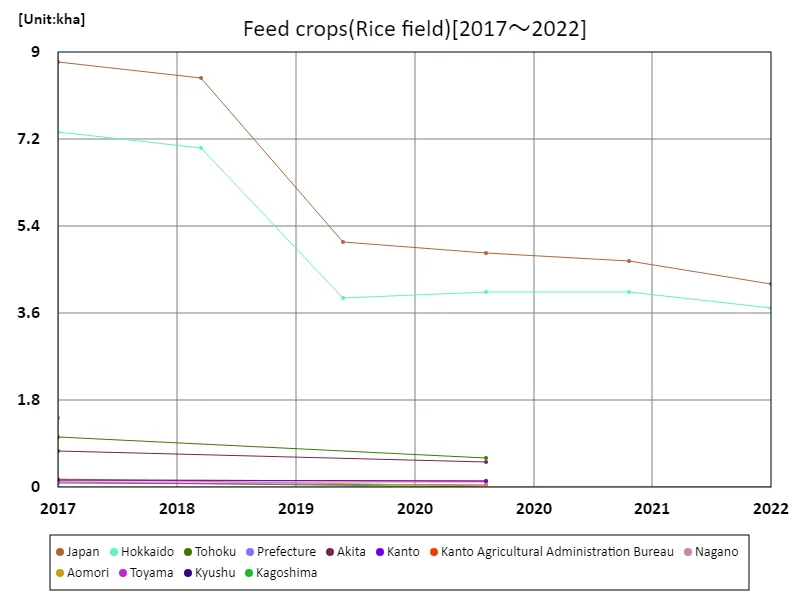

The maximum is 8.8kha[2017] of Japan, and the current value is about 47.7%
Oat field.
In Japanese agriculture, the area of land cultivated with feed crops nationwide reached a peak of 40.4 kha in 2017. Since this value is the current maximum, it suggests that the area of land cultivated with feed crops is stable or even increasing. The increase in cultivated area in fields suggests that demand for feed crops may be increasing and that more efficient production methods are being adopted in fields. Additionally, it may not be evenly spread across the country, with cultivation being more concentrated in some areas. These regional differences are thought to be due to the climate, soil conditions, and agricultural characteristics of each region. Overall, the area of land used for feed crops is on the rise, which is seen as contributing to the sustainability of agriculture and the development of the livestock industry.
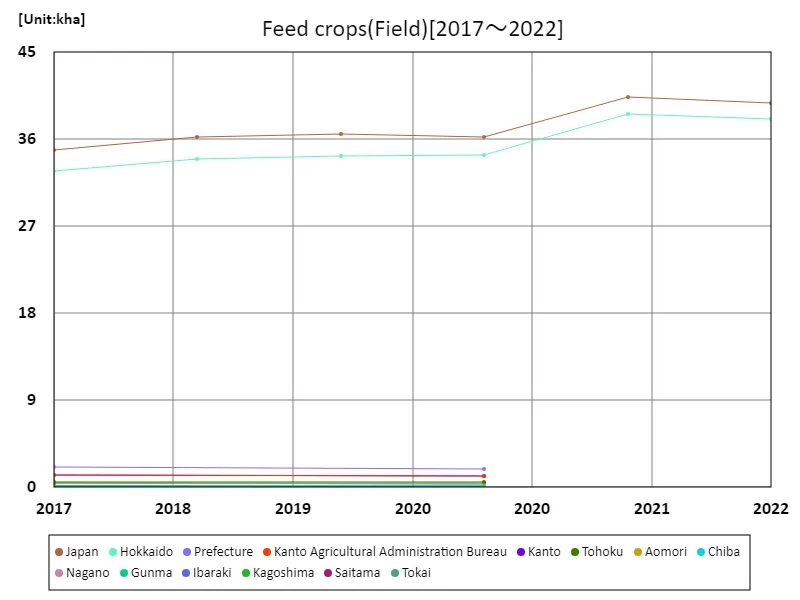

The maximum is 40.4kha[2021] of Japan, and the current value is about 98.5%
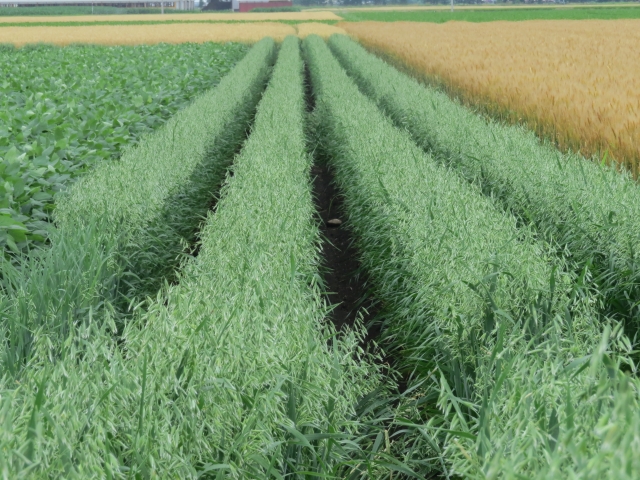


Comments